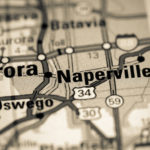Chicago Retail Impacted by COVID-19 Pandemic

Chicago’s retail market turned on its head in the second quarter due to the coronavirus pandemic. Restaurants, shops, movie theatres, and gyms were forced to close for most of the quarter due to the virus. In June, Chicago gradually started to reopen certain businesses and activities. However, the pandemic drove over 1 million square feet of negative absorption.
All segments in Chicago’s retail sector has been hit hard, but the most significant hit segments have been malls and power centers, which have borne the brunt of losses thus far in 2020. Since the start of the pandemic, the vacancy rates have crossed up by 20 basis points throughout the entire Chicago retail market.
The vacancy rates hit 6.3% as of the end of the second quarter. Vacancy rates in malls and power centers have risen by more than 200 basis points and 80 basis points, respectively. It is expected that the next quarter will face the same conditions. Chicago area landlords are facing additional top-line revenue headwinds from falling collections and rents.
Since the start of 2020, the retail market rents have declined by over 1%. The most significant pullbacks have been seen in Chicago’s downtown neighborhoods. The average market rates are expected to continue to drive down as many national and local retailers are struggling financially to meet the obligations.
There is some good news as well. Since the pandemic, several new leases have been signed including a few by experimental tenants. Leasing activity significantly drove in pre-pandemic demand, experimental tenants signing new leasing activity is a positive sign of re-growth in the Chicago market. Thus, bright spots remain despite glooming circumstances.










